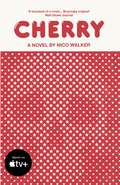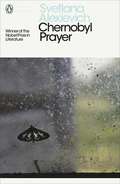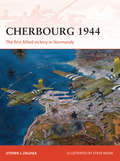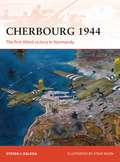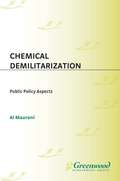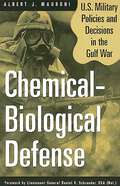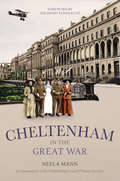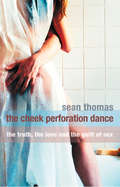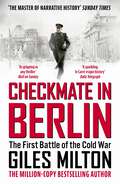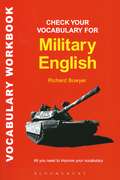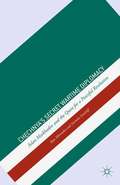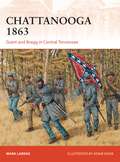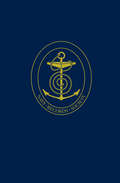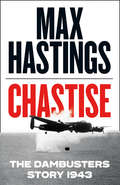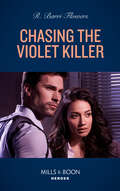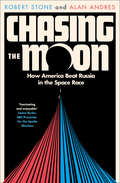- Table View
- List View
The Chesapeake Campaigns 1813–15: Middle ground of the War of 1812 (Campaign #259)
by Graham Turner Scott S. SheadsThe War of 1812 was never the most popular of conflicts on both sides of the Atlantic. Bogged down by their involvement in the Napoleonic conflict in Europe, the British largely relied on the power of the Royal Navy in the early years of the war. Part of this naval strategy was to blockade the American coastline in order to strangle American commerce and bring the new nation to its knees. Nowhere was this blockade more important than in the Chesapeake. Partly in response to the sacking of York (modern Toronto), the British decided to strike at the nation's capital, Washington, DC, and a force of Peninsular War veterans under General Robert Ross landed, defeated the Americans at the battle of Bladensburg and took Washington on August 24, 1814. Buoyed by this success, the British pressed on towards Baltimore. However, they were forced to withdraw at the battle of North Point, and a naval bombardment of Fort McHenry failed to reduce the fort and Baltimore was spared. With his intimate knowledge of the events in this theatre of war, Scott Sheads of Fort McHenry NPS brings these dramatic events of American history to life.
Cherry: A Novel
by Nico WalkerCleveland, Ohio, 2003. A young man is just a college freshman when he meets Emily. They share a passion for Edward Albee and ecstasy and fall hard and fast in love. But soon Emily has to move home to Elba, New York, and he flunks out of school and joins the army. Desperate to keep their relationship alive, they marry before he ships out to Iraq. But as an army medic, he is unprepared for the grisly reality that awaits him. His fellow soldiers smoke; they huff computer duster; they take painkillers; they watch porn. And many of them die. He and Emily try to make their long-distance marriage work, but when he returns from Iraq, his PTSD is profound, and the drugs on the street have changed. The opioid crisis is beginning to swallow up the Midwest. Soon he is hooked on heroin, and so is Emily. They attempt a normal life, but with their money drying up, he turns to the one thing he thinks he could be really good at – robbing banks. Hammered out on a prison typewriter, Cherry marks the arrival of a raw, bleakly hilarious, and surprisingly poignant voice straight from the dark heart of America.
Chernobyl Prayer: A Chronicle of the Future
by Svetlana Alexievich Anna Gunin Arch TaitA startling history of the Chernobyl disaster by Svetlana Alexievich, the winner of the Nobel prize in literature 2015 On 26 April 1986, at 1.23am, a series of explosions shook the Chernobyl nuclear reactor. Flames lit up the sky and radiation escaped to contaminate the land and poison the people for years to come. While officials tried to hush up the accident, Svetlana Alexievich spent years collecting testimonies from survivors - clean-up workers, residents, firefighters, resettlers, widows, orphans - crafting their voices into a haunting oral history of fear, anger and uncertainty, but also dark humour and love. A chronicle of the past and a warning for our nuclear future, Chernobyl Prayer shows what it is like to bear witness, and remember in a world that wants you to forget.
Cherbourg 1944: The first Allied victory in Normandy (Campaign)
by Steven J. Zaloga Mr Steve NoonSteven Zaloga offers up a rigorous and absorbing study of the first major Allied operation in Normandy after the D-Day landings – the capture of Cherbourg. Blending expert analysis, specially commissioned artwork and illustrative maps, this book tells the story of the bitter struggle to capture this vital point. Cherbourg was recognized by both the German and Allied High commands as crucial to the Allied foothold in Normandy – it was the nearest major port and was desperately needed by the Allies for major logistical operations to support their forces on long stretches of open beach. Hitler, on the other hand, declared Cherbourg to be a 'Festung' (fortress), a designation everyone knew to mean that its defenders were to fight to the last man. After a grueling struggle that involved several distinct tactical phases to overcome the different elements of Cherbourg's defence, the campaign resulted in a bittersweet Allied victory, the drama and significance of which are explained in full in this work.
Cherbourg 1944: The first Allied victory in Normandy (Campaign)
by Steven J. Zaloga Steve NoonSteven Zaloga offers up a rigorous and absorbing study of the first major Allied operation in Normandy after the D-Day landings – the capture of Cherbourg. Blending expert analysis, specially commissioned artwork and illustrative maps, this book tells the story of the bitter struggle to capture this vital point. Cherbourg was recognized by both the German and Allied High commands as crucial to the Allied foothold in Normandy – it was the nearest major port and was desperately needed by the Allies for major logistical operations to support their forces on long stretches of open beach. Hitler, on the other hand, declared Cherbourg to be a 'Festung' (fortress), a designation everyone knew to mean that its defenders were to fight to the last man. After a grueling struggle that involved several distinct tactical phases to overcome the different elements of Cherbourg's defence, the campaign resulted in a bittersweet Allied victory, the drama and significance of which are explained in full in this work.
Chemical Warrior: Syria, Salisbury and Saving Lives at War
by Hamish de Bretton-GordonGRIPPING, MOVING AND INSPIRING: the remarkable life of a world-leading expert in chemical weapons defence. "His work has saved lives and given hope." - Professor David Nott, bestselling author of War DoctorFor thirty years, Hamish has served and volunteered in conflict zones around the world. As the army's foremost chemical weapons expert, he built a unique first-hand understanding of how to prevent attacks and train doctors on the frontline - saving countless lives in the process. After suffering near-death experiences time and again, Hamish discovered he had a ticking time bomb in his own chest: a heart condition called Sudden Death Syndrome that could kill him at any time. But with a new awareness for the fragility of life, he fought harder to make his count.Despite facing extraordinary personal danger, Hamish has unearthed evidence of multiple chemical attacks in Syria and continues to advise the government at the highest level, including after the 2018 Novichok poisoning in Salisbury. Lifting the lid on Hamish's unique world of battlefield expertise and humanitarian work, Chemical Warrior is a thrilling story of bravery and compassion.
Chemical Warfare during the Vietnam War: Riot Control Agents in Combat
by D. Hank EllisonChemical Warfare during the Vietnam War documents the use of antipersonnel chemical weapons throughout the Vietnam War, and explores their effectiveness under the wide variety of circumstances in which they were employed. The short, readable account follows the US program as it progressed from a focus on the humanitarian aspects of non-lethal weapons to their use as a means of augmenting and enhancing the lethality of traditional munitions. It also presents the efforts of the North Vietnamese to both counter US chemical operations and to develop a chemical capability of their own. Chemical Warfare during the Vietnam War is a comprehensive and thoroughly fascinating examination of riot-control agents during the Vietnam War.
Chemical Warfare during the Vietnam War: Riot Control Agents in Combat
by D. Hank EllisonChemical Warfare during the Vietnam War documents the use of antipersonnel chemical weapons throughout the Vietnam War, and explores their effectiveness under the wide variety of circumstances in which they were employed. The short, readable account follows the US program as it progressed from a focus on the humanitarian aspects of non-lethal weapons to their use as a means of augmenting and enhancing the lethality of traditional munitions. It also presents the efforts of the North Vietnamese to both counter US chemical operations and to develop a chemical capability of their own. Chemical Warfare during the Vietnam War is a comprehensive and thoroughly fascinating examination of riot-control agents during the Vietnam War.
Chemical Warfare: A Study in Restraints (PDF)
by Frederic Joseph BrownWhy would a nation, in the midst of a vicious and unrestricted war, hesitate to employ a weapon guaranteed to inflict massive casualties on the enemy? Major Frederic Brown offers here the first critical analysis of this curious World War II phenomenon. He investigates the nature of restraints-political, military, economic, and psychological-operative in varying degrees between 1919 and 1945, when U.S. chemical warfare policy was being formed. Starting with the experiences of toxic agent use during World War I, Major Brown shows how various restraints to gas warfare developed during the inter-war years. He then discusses the World War II experience. In the conclusion Major Brown relates his findings to contemporary conflicts and offers important implications for the future of the cold war.Originally published in 1968.The Princeton Legacy Library uses the latest print-on-demand technology to again make available previously out-of-print books from the distinguished backlist of Princeton University Press. These editions preserve the original texts of these important books while presenting them in durable paperback and hardcover editions. The goal of the Princeton Legacy Library is to vastly increase access to the rich scholarly heritage found in the thousands of books published by Princeton University Press since its founding in 1905.
Chemical Warfare: A Study in Restraints
by Fredric BrownIn the aftermath of 9/11, the potential terror of weapons of mass destruction--from nuclear, biological, and chemical to dirty bombs--preoccupies national security experts. In Chemical Warfare, Frederic J. Brown, presents a cogent, innovative framework for understanding the historical forces that have restrained the use of WMD and how they continue to have relevance today. Analyzing both world wars, he argues that the restraints on use were complex and often unpredictable and ranged from the political to the technological. The author offers a detailed examination of American chemical warfare policy as it was shaped by industry and public sentiment, as well as national and military leaders. The organization of the book into three parts reflects the importance of battlefield experiences during the First World War and of international political restraints as they evolved during the interwar years and culminated in ""no first use"" policies by major powers in World War II. Part I examines the use of chemical weapons in World War I as it influenced subsequent national policy decisions. Part II focuses on the evolution of political, military, economic, and psychological restraints from 1919 to 1939. Part III discusses World War II during two critical periods: 1939 to early 1942, when the environment of the war was being established largely without American influence; and during 1945, when the United States faced no credible threat of retaliation to deter its strategic and battlefield use of chemical weapons. Written at the height of controversy about the U.S. use of chemicals in Vietnam, Chemical Warfare offers a valuable historical perspective, as relevant now in its analysis of chemical and also nuclear policy as it was when first published.
Chemical Warfare: A Study in Restraints
by Fredric BrownIn the aftermath of 9/11, the potential terror of weapons of mass destruction--from nuclear, biological, and chemical to dirty bombs--preoccupies national security experts. In Chemical Warfare, Frederic J. Brown, presents a cogent, innovative framework for understanding the historical forces that have restrained the use of WMD and how they continue to have relevance today. Analyzing both world wars, he argues that the restraints on use were complex and often unpredictable and ranged from the political to the technological. The author offers a detailed examination of American chemical warfare policy as it was shaped by industry and public sentiment, as well as national and military leaders. The organization of the book into three parts reflects the importance of battlefield experiences during the First World War and of international political restraints as they evolved during the interwar years and culminated in ""no first use"" policies by major powers in World War II. Part I examines the use of chemical weapons in World War I as it influenced subsequent national policy decisions. Part II focuses on the evolution of political, military, economic, and psychological restraints from 1919 to 1939. Part III discusses World War II during two critical periods: 1939 to early 1942, when the environment of the war was being established largely without American influence; and during 1945, when the United States faced no credible threat of retaliation to deter its strategic and battlefield use of chemical weapons. Written at the height of controversy about the U.S. use of chemicals in Vietnam, Chemical Warfare offers a valuable historical perspective, as relevant now in its analysis of chemical and also nuclear policy as it was when first published.
Chemical Demilitarization: Public Policy Aspects (Non-ser.)
by Albert J. MauroniFor more than 15 years, the Army's chemical demilitarization program has been criticized and castigated as a potentially dangerous effort, poorly executed without concern for the public. By reviewing the chemical demilitarization program as a public policy area, Mauroni offers a different perspective on how the Army worked with Congress and the public to offer the safest program possible. The Army was forced to delay its own schedule and increase the breadth and depth of the program to address political demands and idealistic environmental concerns. Mauroni contends that Army and Department of Defense leadership's insistence on treating this program as a strictly technical effort, rather than as a public policy concern is in part responsible for the public's misunderstanding of the Army's execution of the program.Despite its challenges, the Army is well on its way to accomplishing its goal of destroying the U.S. chemical weapons stockpile with no impact on the public or environment. They have stumbled through, however, rather than planned their exit. According to Mauroni, the Army needs to examine this program carefully to identify how to address public policy questions better in the future, to include responding to chemical and biological terrorism, developing a biological warfare vaccine program, and addressing future Gulf War illness questions. Their failure to learn will otherwise result in a continued inability to address critical questions on how they respond to chemical and biological warfare issues.
Chemical-Biological Defense: U.S. Military Policies and Decisions in the Gulf War (Non-ser.)
by Albert J. MauroniThe Gulf War has been the only conflict in the last half-century that featured the possible use of chemical-biological weapons against U.S. forces. Vulnerability to such an attack spurred the Department of Defense to action from the first hint of trouble in August 1990 through the end of hostilities in March 1991. Nearly disbanded in 1972, the U.S. Army Chemical Corps would be the prime force in ensuring that U.S. forces could both survive and sustain combat operations under chemical-biological warfare conditions. Focussing on the work of senior Army officials, this account assesses the degree of readiness achieved by the ground war's initiation and the lessons learned since the conflict.For an appropriately trained and equipped military force, chemical weapons pose not the danger of mass destruction but the threat of mass disruption, no more deadly than smart munitions or B-52 air strikes. This book will reveal a coordinated response to train and equip U.S. forces did take place prior to the feared Iraqi chemical and biological attacks. Undocumented in any other book, it details the plans that rushed sixty Fox reconnaissance vehicles to the Gulf, the worldwide call for protective suits and masks, and the successful placement of biological agent detectors prior to the air offensive. In addition, the work addresses what really happened at Khamisiyah. Were troops exposed to chemical weapons and what is behind the mysterious Gulf War Syndrome?
Cheltenham in the Great War
by Neela MannCheltenham in the Great War is the first book to portray the town, its people and the impact of the ‘war to end all wars’ from the declaration of war in 1914 to Armistice Day in 1918. Almost 1,000 Cheltenham women left by train every day for munitions work, hundreds made airplanes in the Winter Gardens, many were nurses and most former suffragettes joined the WVR. Why did two schools do double shifts and for what did the townspeople raise £186,000 in one week in 1918? How did Cheltenham cope with 7,250 soldiers billeted in the town and ‘khaki fever’? This book gives an insight into the lives of different social classes in Cheltenham – including stories of remarkable women – and how their war was fought on the Home Front. The Great War story of Cheltenham is told through considerable new research and is vividly illustrated throughout with evocative, informative images, many of which have not been published previously.
The Cheek Perforation Dance
by Sean ThomasA dark, compelling tale of sex, guilt and morality, exploring the complexity of date rape, from the author of Kissing England
Checkmate in Berlin: The Cold War Showdown that Shaped the Modern World
by Giles Milton'Brilliantly recapturing the febrile atmosphere of Berlin in the first four years after the Second World War, Giles Milton reminds us what an excellent story-teller he is' - Andrew Roberts, author of Churchill: Walking with DestinyBerlin was in ruins when Soviet forces fought their way towards the Reichstag in the spring of 1945. Streets were choked with rubble, power supplies severed and the population close to starvation. The arrival of the Soviet army heralded yet greater terrors: the city's civilians were to suffer rape, looting and horrific violence. Worse still, they faced a future with neither certainty nor hope.Berlin's fate had been sealed four months earlier at the Yalta Conference. The city, along with the rest of Germany, was to be carved up between the victorious powers - British, American, French and Soviet. On paper, it seemed a pragmatic solution; in reality, it fired the starting gun for the Cold War. As soon as the four powers were no longer united by the common purpose of defeating Germany, they reverted to their pre-war hostility and suspicion. Rival systems, rival ideologies and rival personalities ensured that Berlin became an explosive battleground. The ruins of this once-great city were soon awash with spies, gangsters and black-marketeers, all of whom sought to profit from the disarray. For the next four years, a handful of charismatic but flawed individuals - British, American and Soviet - fought an intensely personal battle over the future of Germany, Europe and the entire free world.CHECKMATE IN BERLIN tells this exhilarating, high-stakes tale of grit, skullduggery, and raw power. From the high politics of Yalta to the desperate scramble to break the Soviet stranglehold of Berlin with the greatest aerial operation in history, this is the epic story of the first battle of the Cold War and how it shaped the modern world.
Check Your Vocabulary for Military English: A Workbook for Users (Check Your Vocabulary)
by Bloomsbury PublishingThis workbook provides material to learn English with military vocabulary. It contains a range of activities, including word games, puzzles and quizzes to help improve specialist English vocabulary. It covers British, American and international military terms and includes: military personnel; manoeuvres; equipment; vehicles; weapons; tactics; and commands.
Chechnya's Secret Wartime Diplomacy: Aslan Maskhadov and the Quest for a Peaceful Resolution
by I. Akhmadov N. DaniloffThis volume makes available transcripts and commentary from the secret correspondence between former Chechen foreign minister Ilyas Akhmatov and Chechen President Aslan Maskhadov. This correspondence provides revelatory insights into both men's attempts to secure Western support for a peaceful transition to an independent Chechnya.
Chattanooga 1863: Grant and Bragg in Central Tennessee (Campaign)
by Adam Hook Mark LardasFollowing the disastrous defeat at Chickamauga, Union forces were in disarray and the tactically vital Chattanooga was under siege and on the brink of falling. Secretary of War William Stanton ordered Ulysses Grant to send the Army of Tennessee to reinforce Chattanooga. Grant had already reacted.The situation was dire. It required outstanding leadership to rescue the situation. President Abraham Lincoln decided Grant was the man for the occasion. In early October, Grant was promoted to command of the Military District of Mississippi and told to clean up the mess created by Chickamauga. With those orders a new campaign began: the Chattanooga Campaign. This book tracks how over the next three months Grant would orchestrate the movements of three Union Armies – The Army of the Cumberland, The Army of the Tennessee, and two Corps from the Army of the Potomac. He would lead them into a series of battles that saw them break the siege of Chattanooga before in three battles in three days the Union forces broke the Confederate army entrenched in the heights overlooking Chattanooga.
Chattanooga 1863: Grant and Bragg in Central Tennessee (Campaign #295)
by Mark Lardas Mr Adam HookFollowing the disastrous defeat at Chickamauga, Union forces were in disarray and the tactically vital Chattanooga was under siege and on the brink of falling. Secretary of War William Stanton ordered Ulysses Grant to send the Army of Tennessee to reinforce Chattanooga. Grant had already reacted.The situation was dire. It required outstanding leadership to rescue the situation. President Abraham Lincoln decided Grant was the man for the occasion. In early October, Grant was promoted to command of the Military District of Mississippi and told to clean up the mess created by Chickamauga. With those orders a new campaign began: the Chattanooga Campaign. This book tracks how over the next three months Grant would orchestrate the movements of three Union Armies – The Army of the Cumberland, The Army of the Tennessee, and two Corps from the Army of the Potomac. He would lead them into a series of battles that saw them break the siege of Chattanooga before in three battles in three days the Union forces broke the Confederate army entrenched in the heights overlooking Chattanooga.
Chatham Dockyard, 1815-1865: The Industrial Transformation
by Philip MacdougallBy the end of the Napoleonic Wars, the seven home dockyards of the British Royal Navy employed a workforce of nearly 16,000 men and some women. On account of their size, dockyards add much to our understanding of developing social processes as they pioneered systems of recruitment, training and supervision of large-scale workforces. From 1815-1865 the make-up of those workforces changed with metal working skills replacing wood working skills as dockyards fully harnessed the use of steam and made the conversion from constructing ships of timber to those of iron. The impact on industrial relations and on the environment of the yards was enormous. Concentrating on the yard at Chatham, the book examines how the day-to-day running of a major centre of industrial production changed during this period of transition. The Admiralty decision to build at Chatham the Achilles, the first iron ship to be constructed in a royal dockyard, placed that yard at the forefront of technological change. Had Chatham failed to complete the task satisfactorily, the future of the royal dockyards might have been very different.
Chatham Dockyard, 1815-1865: The Industrial Transformation
by Philip MacDougallBy the end of the Napoleonic Wars, the seven home dockyards of the British Royal Navy employed a workforce of nearly 16,000 men and some women. On account of their size, dockyards add much to our understanding of developing social processes as they pioneered systems of recruitment, training and supervision of large-scale workforces. From 1815-1865 the make-up of those workforces changed with metal working skills replacing wood working skills as dockyards fully harnessed the use of steam and made the conversion from constructing ships of timber to those of iron. The impact on industrial relations and on the environment of the yards was enormous. Concentrating on the yard at Chatham, the book examines how the day-to-day running of a major centre of industrial production changed during this period of transition. The Admiralty decision to build at Chatham the Achilles, the first iron ship to be constructed in a royal dockyard, placed that yard at the forefront of technological change. Had Chatham failed to complete the task satisfactorily, the future of the royal dockyards might have been very different.
Chastise: The Raf's Most Brilliant Attack Of World War Ii
by Max HastingsA masterly history of the Dambusters raid from bestselling and critically acclaimed Max Hastings.
Chasing The Violet Killer (Mills & Boon Heroes): Chasing The Violet Killer / Proving Colton's Innocence (the Coltons Of Grave Gulch)
by R. Barri FlowersCan they prevent another gruesome murder?
Chasing the Moon: The People, The Politics, And The Promise That Launched America Into The Space Age
by Robert Stone Alan AndresIn a world divided by the ideological struggles of the Cold War, the Vietnam War and the Civil Rights Movement, more than one-fifth of the people on the planet paused to watch the live transmission of the Apollo 11 mission. To watch as humanity took a giant leap forward. A companion book to the landmark documentary series on BBC TV.

